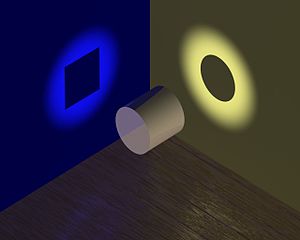... IN OTHER WORDS
- The universe is made of 4D space-time.
- The mass is very dense space-time.
- The bodies with a lot of mass warp space-time (dark energy) around them.
- According to the Unified Field Theory photons are formed from the movement. Some photons are free (dark energy) and others unite to form atoms.
The formula uet = m + (Δgd, x) p explains the four fundamental forces (4FF) as follows: the magnitude of these forces depends on the mass of the body, internal changes and movement and outside, of the distance from the center of the body.




